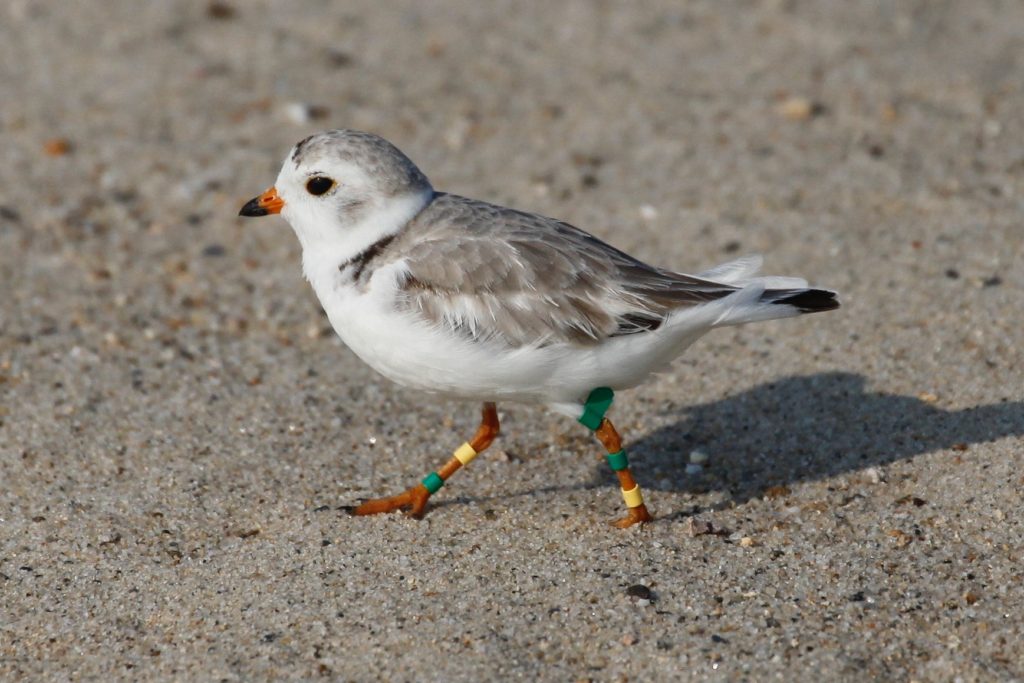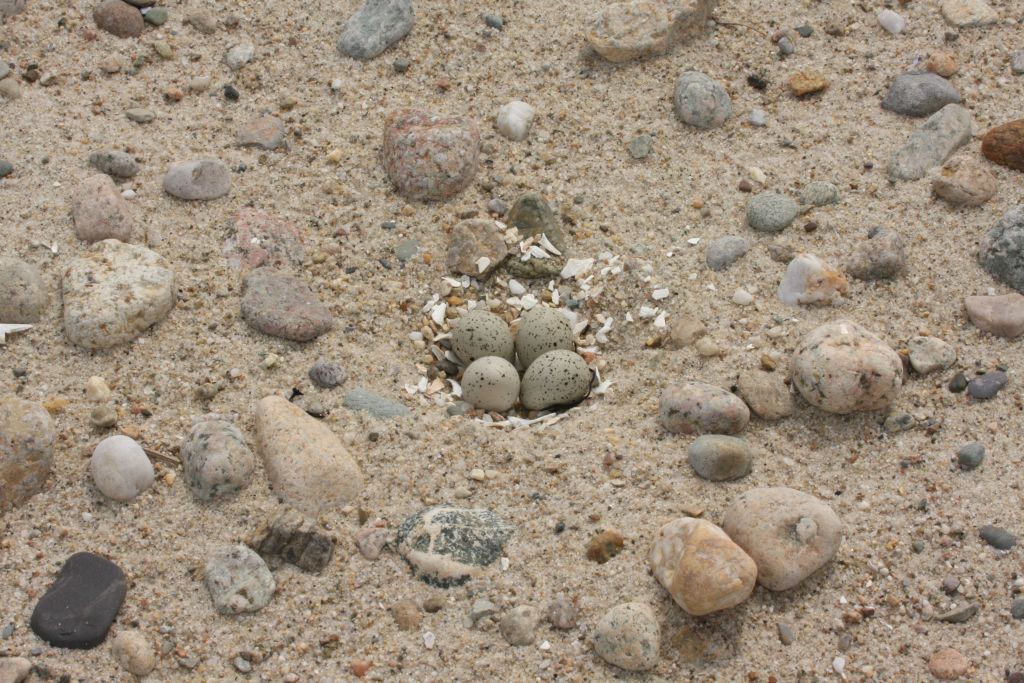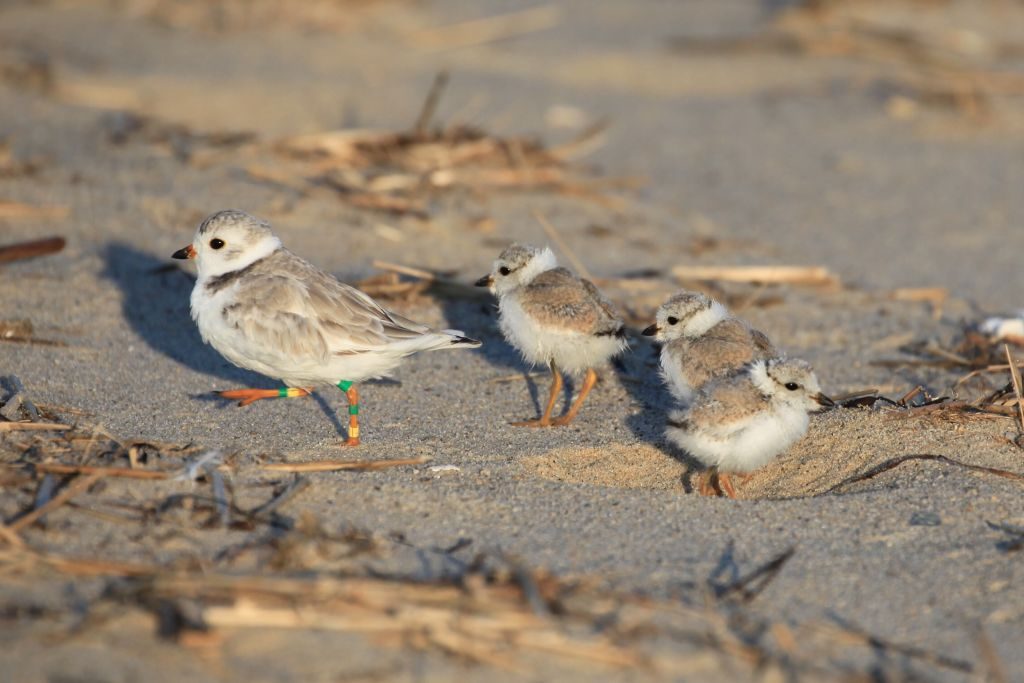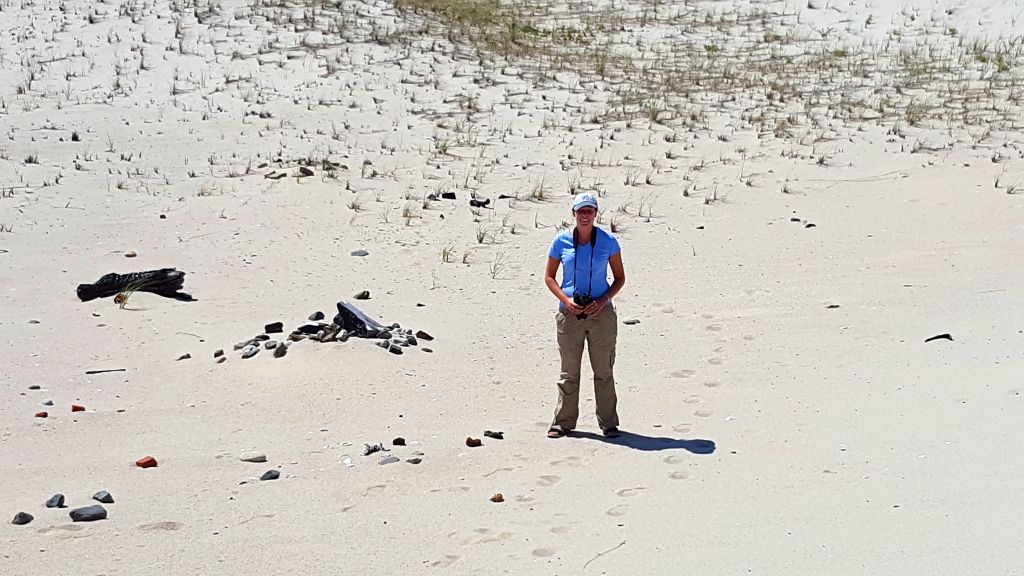True, “Where in Wellfleet?” would be a more appropriate title, but it’s not quite as catchy.
Bandito is a much beloved Piping Plover, known by all coastal waterbird staff and many volunteers at Wellfleet Bay. He is the only banded (colorful leg bands used for identification) plover that we monitor and he is quite a character. He has returned to nest at Wellfleet Bay for the past four years in a row. Last year he fledged three chicks at South Sunken Meadow Beach (SSM).

Bandito – note his colorful leg bands! – Photo courtesy of Sherri VandenAkker
This year, the story was not the same. It all started very normally: Bandito and his mate (we just call her “the Mrs.”) showed up on schedule at SSM at the end of March and started their first nest in early May. Alas, this nest was not meant to be. About halfway through the incubation period, catastrophe struck. The culprit was the most common threat all plovers face during the nesting season: predation. In this case, it appeared to be a crow. The eggs were gone and Bandito and the Mrs. were nowhere to be found. Where would he go next?
On a routine visit to the northwest side of Lieutenant Island with Rebecca Shoer, our terrapin coordinator, (see Turtle Person Pinch Hits for Plovers), we had an unexpected visitor. Piping at us in all his glory, Bandito was back, and apparently ready to try nesting again. A little over a week after he lost his first nest, Bandito and the Mrs. had started anew. Unfortunately, another danger would soon be washing up on their door…
Just a week after starting their nest the pair were confronted by an extreme high tide which occurs naturally about twice a month. Their location wasn’t quite high enough to prevent it from being washed away without a trace. Once again, Bandito and the Mrs. were missing.
Thankfully, our entire science staff always has an eye out for plovers! Just about a week later we had another Bandito sighting, this time by our horseshoe crab researchers, Mike Long and Ian Kinahan. While out surveying at the southwest side of Lieutenant Island, they happened upon Bandito being his usual vocal self. I went back the next day with a volunteer to investigate and we quickly located Bandito, already with a one-egg nest! Unfortunately, he chose a spot that was right in the line of human foot traffic, so we installed new symbolic fencing to protect their nest. Symbolic fencing is key for protection of such cryptic nests. The nest is in the incubation stage right now and, as we all know, third time’s the charm!

Classic, cryptic four-egg Piping Plover nest (photo by Ben Carroll)
While we often make light of the adventures of Bandito and the Mrs., the threats these birds face during the nesting season area very real. Predation, disturbance by people and overwashing are some of the most common causes of nest failure for Piping Plovers. You can see from Bandito’s story how many people it takes to protect and monitor just one nest! The participation by staff, volunteers and general beachgoers has been essential to the conservation of Piping Plovers and other threatened shorebirds.

Bandito and his brood from the 2015 season (photo by Sherri VandenAkker).
This post is by Meghan Beatty, Wellfleet Bay’s lead field technician for coastal waterbird monitoring.

Meghan at a nesting site in Truro

